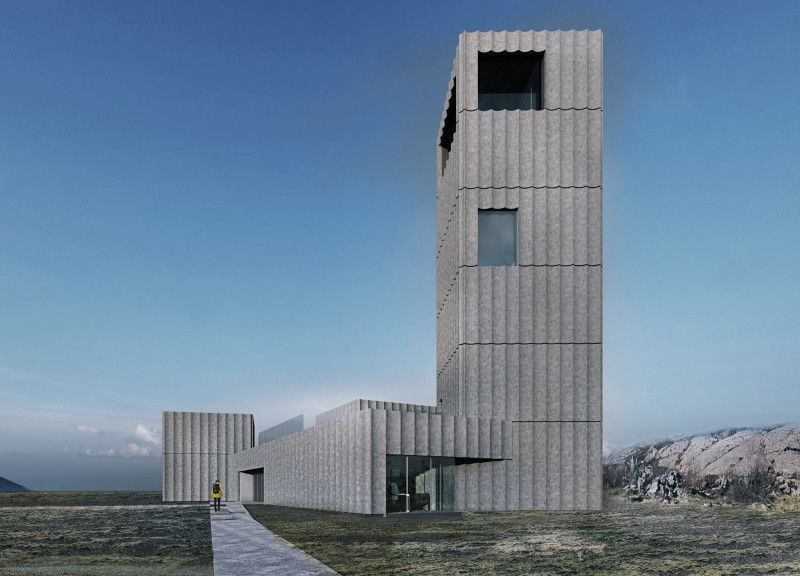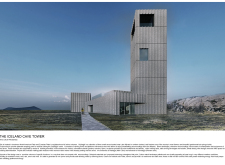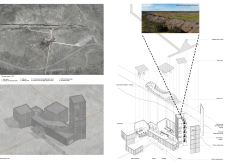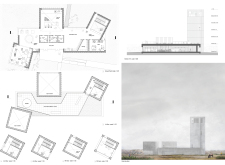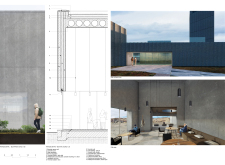5 key facts about this project
The Iceland Cave Tower project is an architectural endeavor that harmonizes with the dramatic landscapes of Iceland's North American and Eurasian tectonic plates. Situated close to Grýtagjá and Lake Mývatn, this design serves as a visitor center facilitating access to a series of nearby lava caves. The overarching purpose of the structure is to provide educational opportunities about the geological features of the area while ensuring an immersive visitor experience.
The Iceland Cave Tower represents an intersection of architecture and the natural environment. Its form is designed to resonate with the unique geological context, offering an aesthetic that reflects the ruggedness of the surrounding lava fields and caves. The project's function encompasses various facilities, including a viewing tower, a café, visitor information centers, and administrative spaces. The spatial organization promotes flow and interaction among areas, encouraging visitors to engage with both the building and the landscape.
Unique Design Approaches
The design of the Iceland Cave Tower is defined by its verticality and fragmented massing, where various components create a visual dialogue with the terrain. This configuration enhances panoramic views, inviting visitors to appreciate the environment from different vantage points. The primary observation tower serves as the architectural focal point, while cantilevered platforms extend the building outwards, facilitating opportunities for contemplation of the natural landscape.
Material selection emphasizes durability and sustainability. The use of reinforced concrete as the primary structural material ensures resilience against the local volcanic environment, while insulated wall panels improve energy efficiency. Additionally, the integration of green roof systems promotes ecological awareness through vegetation that matches the local flora. Extensive use of glass gives the façade an open quality, seamlessly connecting the interior spaces with breathtaking outdoor vistas.
Sustainability Initiatives
Sustainable design principles are embedded within the project through the incorporation of geothermal energy systems, rainwater harvesting, and solar panel installations. These features support the building's operational needs while minimizing environmental impact. The focus on reducing energy consumption and enhancing regenerative practices signifies a commitment to responsible architectural design.
The Iceland Cave Tower exemplifies an architectural response to both functional and environmental demands. By prioritizing user interaction with the landscape and fostering educational engagement, the project achieves a balance between built form and nature. For a comprehensive understanding of the architectural plans, sections, designs, and ideas that inform this project, interested readers are encouraged to explore the detailed presentation of the Iceland Cave Tower.


